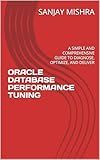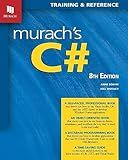Best Database Tools to Buy in December 2025

Database Systems: Design, Implementation, & Management



Identifying Wood: Accurate Results with Simple Tools
- QUALITY ASSURANCE: EVERY BOOK IS INSPECTED FOR READABILITY.
- COST-EFFECTIVE: SAVE MONEY WITH AFFORDABLE USED BOOKS.
- ECO-FRIENDLY: PROMOTE SUSTAINABILITY BY CHOOSING PRE-OWNED READS.



The Manga Guide to Databases



Database Systems: Design, Implementation, & Management



ORACLE DATABASE PERFORMANCE TUNING: A CHECKLIST APPROACH WITH SIMPLE AND COMPREHENSIVE GUIDE TO DIAGNOSE, OPTIMIZE, AND DELIVER



Murach's C# Programming Book (8th Edition) Comprehensive Guide for Windows Forms Apps & Database Development - Self-Paced Learning for Beginners & Professional Developers


In Laravel, joining tables is a common task when you need to combine data from multiple database tables in a single query. By joining tables, you can retrieve related information from different tables based on their relationships.
To join tables in Laravel, you can use the join() method provided by the Query Builder. This method allows you to define the table to join and the join conditions.
Here's an example of how to join two tables using the join() method:
DB::table('users') ->join('orders', 'users.id', '=', 'orders.user_id') ->select('users.*', 'orders.order_number') ->get();
In the example above, we have joined the users table with the orders table. We specified the join conditions using the join() method by providing the table name, followed by the column from the first table, the operator, and the column from the second table.
The select() method is used to specify the columns to retrieve from the joined tables. In this case, we are selecting all columns from the users table and the order_number column from the orders table.
Finally, we use the get() method to execute the query and retrieve the results.
You can also perform different types of joins using the join() method by specifying the type as the first argument. For example:
DB::table('users') ->leftJoin('orders', 'users.id', '=', 'orders.user_id') ->select('users.*', 'orders.order_number') ->get();
In the example above, we have used the leftJoin() method to perform a left join between the users and orders tables.
By using the join() method in Laravel, you can easily combine data from multiple tables based on their relationships and retrieve the desired results.
How do you join two tables using the query builder in Laravel?
To join two tables using the query builder in Laravel, you can use the join method. Here's an example:
$users = DB::table('users') ->join('orders', 'users.id', '=', 'orders.user_id') ->select('users.name', 'orders.order_total') ->get();
In this example, users and orders are the table names. The join method takes four arguments:
- The first argument is the second table you want to join (orders in this case).
- The second argument is the column in the first table (users) that you want to join on (users.id).
- The third argument is the operator (= in this case).
- The fourth argument is the column in the second table (orders) that you want to join on (orders.user_id).
You can also add a select method to specify the columns you want to fetch from the joined tables. In this example, we select the name column from the users table and the order_total column from the orders table.
Finally, the get method is used to fetch the records that match the join condition.
Note: Make sure to import the DB class at the beginning of your file using use Illuminate\Support\Facades\DB;.
How do you alias table names when joining tables in Laravel?
In Laravel, you can alias table names when joining tables using the join method and providing a closure as the second argument. Within the closure, you can use the on method to specify the join condition and the select method to select columns from the joined tables.
Here's an example of aliasing table names when joining tables in Laravel:
DB::table('users') ->join('orders', function ($join) { $join->on('users.id', '=', 'orders.user_id') ->select('users.name as user_name', 'orders.order_date as order_date'); }) ->get();
In this example, the users table is aliased as u and the orders table is aliased as o. The 'users.id', '=', 'orders.user_id' is the join condition. Within the closure, you can use the select method to specify the columns to be selected from the joined tables.
You can replace 'users.name as user_name', 'orders.order_date as order_date' with the desired column names and aliases you want to use.
Note that this example assumes you're using the Fluent Query Builder in Laravel. If you're using Eloquent models, you can achieve the same result by defining relationships between the models and using the join method on the model's query builder instance.
How do you specify columns to select after joining tables in Laravel?
In Laravel, you can use the select() method after joining tables to specify the columns you want to select.
Here's an example of how you can do it:
$results = DB::table('table1') ->join('table2', 'table1.id', '=', 'table2.table1_id') ->select('table1.column1', 'table2.column2') ->get();
In this example, we are joining table1 with table2 on the id column and table1_id column respectively. The select() method is used to specify the columns column1 from table1 and column2 from table2 that we want to select.
You can also use aliases for columns by using the as keyword:
$results = DB::table('table1') ->join('table2', 'table1.id', '=', 'table2.table1_id') ->select('table1.column1 as c1', 'table2.column2 as c2') ->get();
In this example, column1 from table1 will be selected as c1, and column2 from table2 will be selected as c2.
How do you limit the number of results in a joined query in Laravel?
In Laravel, you can limit the number of results in a joined query by using the limit() method.
Here's an example of how to limit the number of results in a joined query:
$results = DB::table('table1') ->join('table2', 'table1.id', '=', 'table2.table1_id') ->select('table1.*', 'table2.column') ->where('table1.column', 'value') ->limit(10) // Limit the number of results to 10 ->get();
In this example, table1 and table2 are the tables you want to join. The join condition is specified using the join() method. The select() method is used to select the desired columns from both tables.
The where() method is used to add any additional conditions to the query. Finally, the limit() method is used to limit the number of results to the desired amount, in this case, 10.
Note that the limit() method can be chained with other query builder methods to further refine the result set before returning the results using the get() method.
How do you perform a right join in Laravel?
In Laravel, you can perform a right join by using the rightJoin method on the query builder instance.
Here is an example of how to perform a right join in Laravel:
$users = DB::table('users') ->rightJoin('posts', 'users.id', '=', 'posts.user_id') ->select('users.name', 'posts.title') ->get();
In the above example, we are performing a right join between the "users" and "posts" tables. The rightJoin method takes three parameters: the table to join, the column from the first table to match, and the operator and column from the second table to match.
You can then use the select method to specify the columns you want to select from the joined tables.
Finally, you can use the get method to retrieve the result of the query.
What is the difference between a left join and an inner join?
The difference between a left join and an inner join lies in the way they combine data from two or more tables:
- Inner Join: Also known as an equijoin, it returns only the matching records from both tables. It selects records where the join condition is met in both tables. If there are no matching records, those rows are omitted from the result. The result set contains only the common data.
- Left Join: Also known as a left outer join, it returns all the records from the left table and the matching records from the right table. It selects all records from the left table, regardless of whether there is a match in the right table. If there are no matching records in the right table, the result will contain NULL values in the right table columns. The result set contains all the data from the left table and the common data from both tables.
In summary, an inner join matches records based on the join condition and returns only the common data, while a left join returns all the records from the left table and the matching records from the right table.
What is a join operation in databases?
A join operation in databases is a method used to combine data from two or more tables based on a related column between them. It allows for retrieving data records that contain information from multiple tables at once. Join operations are commonly used in relational databases to establish relationships and retrieve information from multiple tables efficiently. The join operation is performed by matching the values of the related columns in the tables involved, and it can be categorized into different types such as inner join, outer join, left join, right join, and cross join, each serving a specific purpose in combining data from tables.
